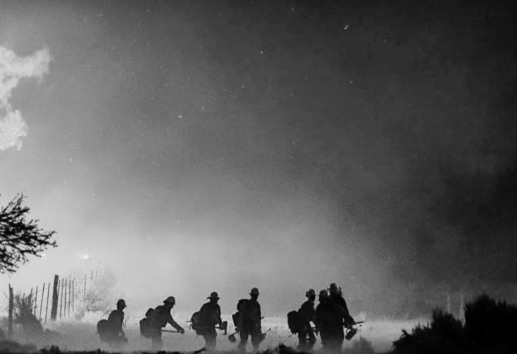Report: Impact of Climate Change on People in California Prisons
California is widely considered Ground Zero in the climate change discussion

Yesterday, Wednesday July 5th, was the hottest day ever recorded on Earth.
It broke the record which was set...the day before, Tuesday July 4th, which broke the previous record set...the day before, on Monday July 3rd.
Considering this, there's every reason in the warming world to believe yesterday's record won't last long. The records continue to fall as scientists say the planet is the hottest it has been in roughly 125,000 years, and those same experts believe more heat records will continue to fall this summer. On Wednesday, Earth's average temperature rose to 62.9 degrees, according to the University of Maine’s Climate Reanalyzer, a tool based on satellite data and computer simulations. The unusual record-breaking warmth is the result of a combination of the strengthening El Niño, the start of summer in the Northern Hemisphere, and climate change.
California is at the forefront of climate change, both in experiencing the devastating effects of the phenomena and working to implement policy to help combat the growing impact. In the last ten years, California has experienced large-scale wildfires, surging temperatures, and devastating flooding, among other climate hazards, that have caused harm to human health and the natural environment. This series of climate hazards has made it evident that the effects of climate change will continue to intensify, have the greatest impact on already vulnerable populations, and, most critically, the California carceral system is not prepared to respond to climate hazards in or near prisons.
In an incredibly timely and relevant study, DropLWOP coalition member Ella Baker Center for Human Rights, working with the UCLA Luskin School of Public Affairs, released a report titled "Hidden Hazards; The Impacts of Climate Change on Incarcerated People in California State Prisons," examining how that incarcerated people face unique challenges during climate hazards and, as a result, must be included in any measure of vulnerability to ensure their safety and well-being.
Key findings from the report:
- Incarcerated people are distinctly vulnerable to climate hazards because they are entirely reliant upon the California Department of Corrections and Rehabilitation (CDCR) for preparedness, response, and recovery.
- CDCR prisons are highly susceptible to climate hazards because they are located in or near remote areas, have an aging infrastructure and population, and are overcrowded. As of January 2023, CDCR operated 34 prison facilities at 108.5% of its design capacity.
- CDCR provides the legislature and the public minimal information on its emergency preparedness. Furthermore, CDCR’s Department Operations Manual (DOM) describes evacuations in a limited way and details the agency’s procedures for fires and earthquakes so narrowly that it leaves many questions on how CDCR will keep people safe.
- Other state carceral systems have failed to keep incarcerated people safe during a climate hazard, and the report's findings suggest California’s carceral emergency management system is set up to do the same.
“In 30-plus-years of incarceration, besides blackouts, I’ve endured earthquakes, heat waves, and flooding. I’ve made it through winters in which an extra blanket was the only thing that separated me from icy-cold air gushing into my small cramped cell. The world now recognizes that these weather extremes are the result of climate change. But, the effects of climate change on the millions [of] Americans behind bars often go unrecognized.” - Juan Moreno Haines, incarcerated journalist at San Quentin State Prison.
You can read and download the full report titled "Hidden Hazards; The Impacts of Climate Change on Incarcerated People in California State Prisons" from the Ella Baker Center & the UCLA Luskin School of Public Affairs.










